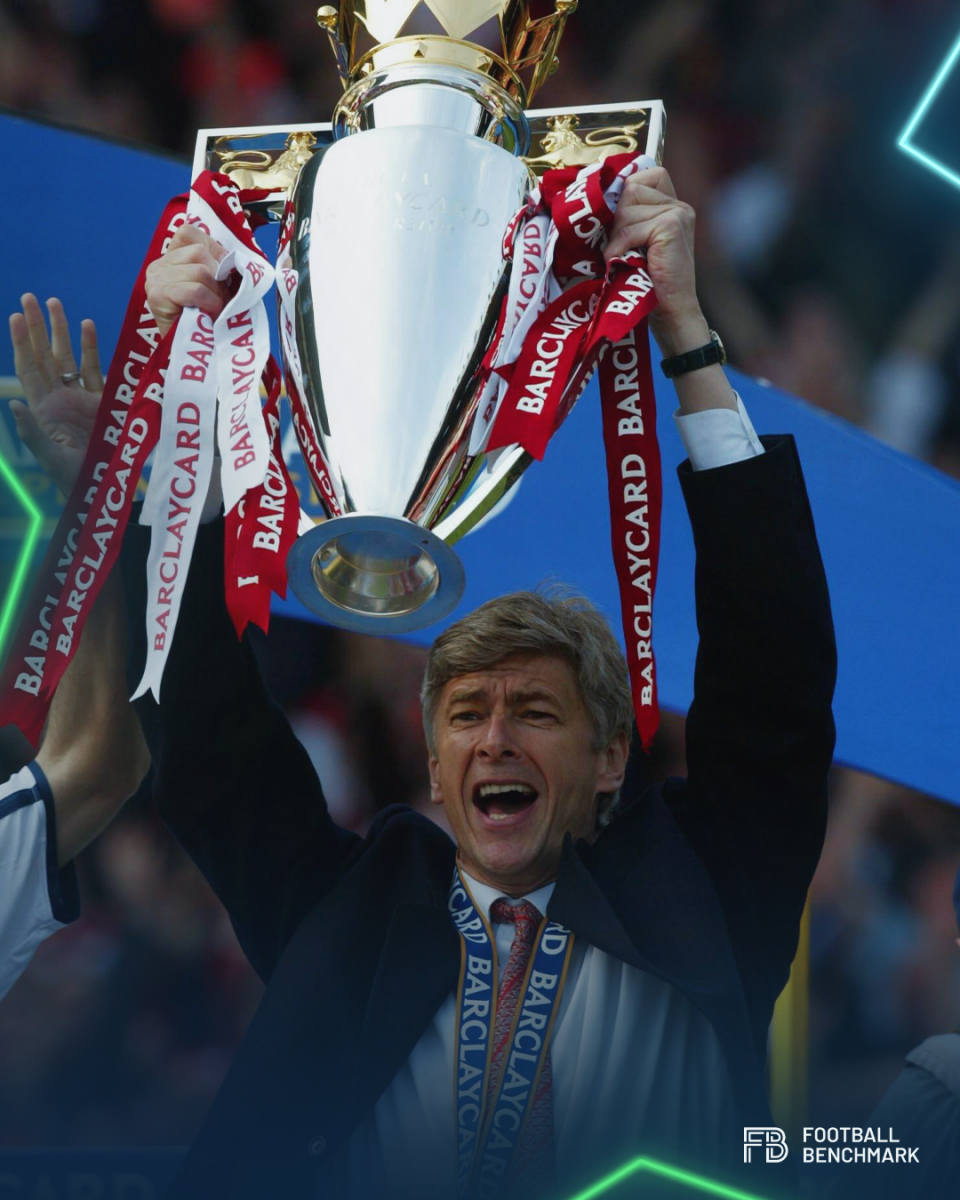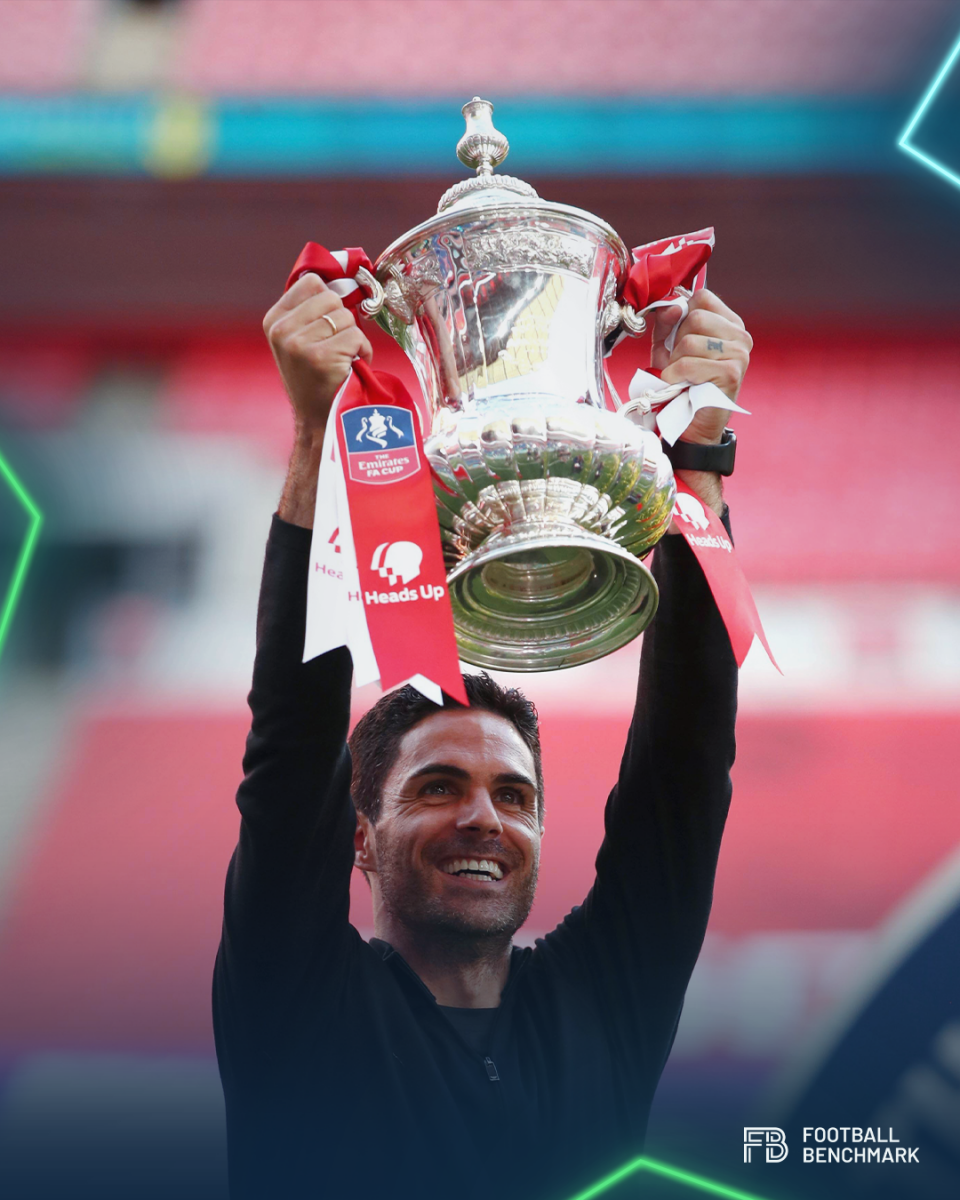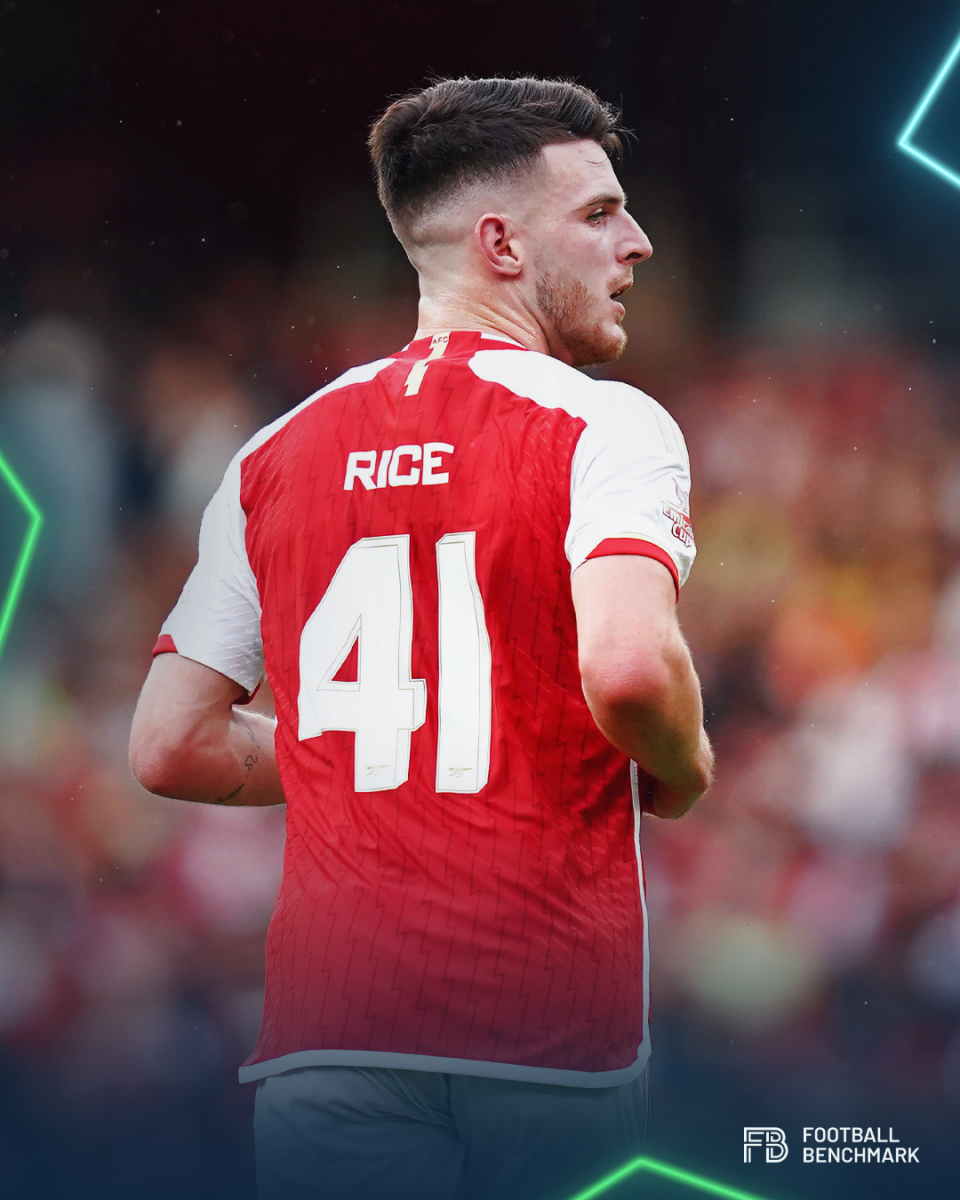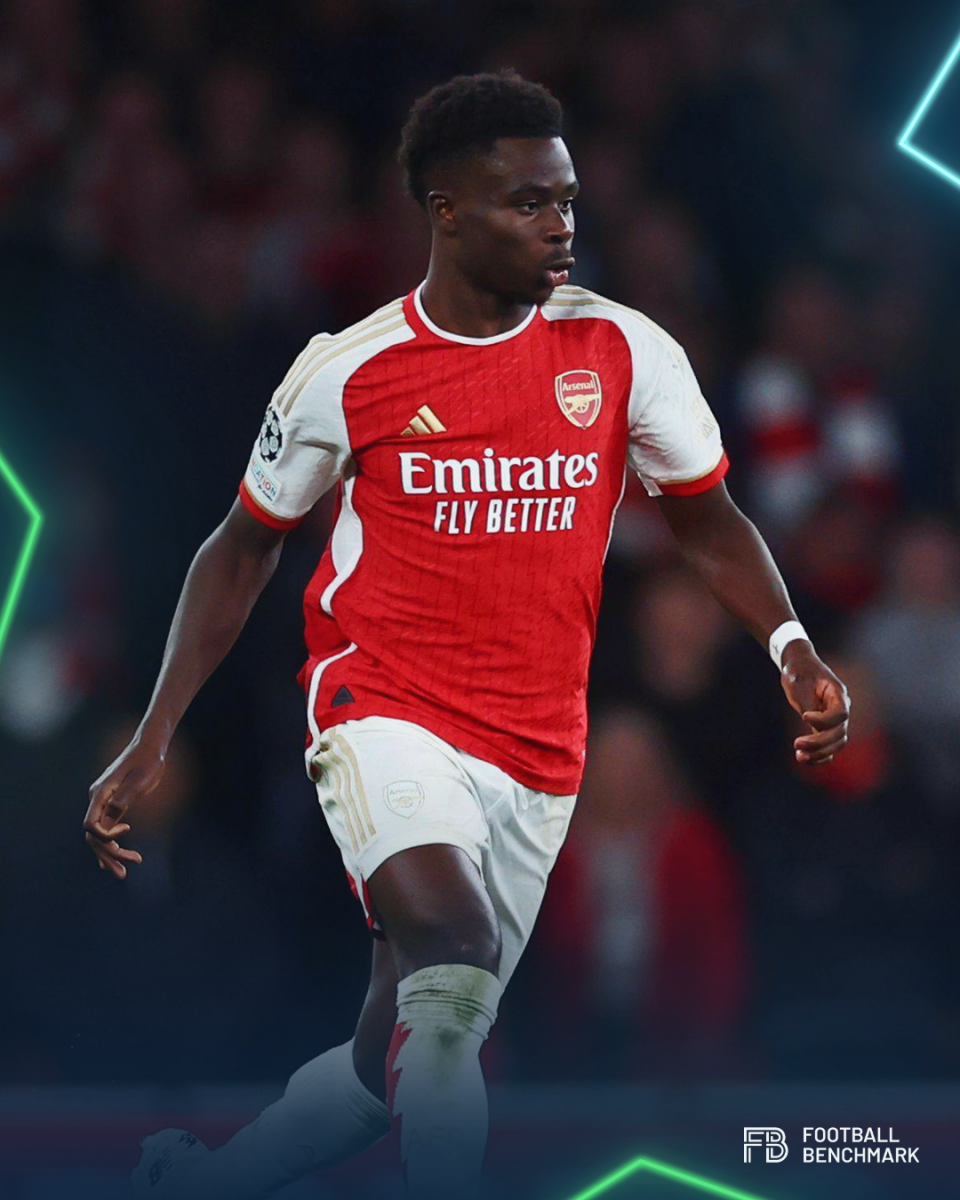In the current season, Arsenal FC are experiencing what could almost certainly be its finest performance in the post-Wenger era. However, reaching this level required overcoming a long and difficult journey.
The club's legendary manager guided the London-based team from 1996 to 2018, overseeing a period of unprecedented success in all aspects. Nonetheless, the conclusion of his tenure signalled the need for change. Like many transitions following iconic reigns, Arsenal's evolution was fraught with challenges. Nevertheless, the 2023/24 season offers renewed hope for fans, both on and off the field, as the team displays promising performances while having the second most valuable squad currently in the world.
In our forthcoming instalment of the Money Talks series, we delve into an analysis of Arsenal FC's post-Wenger era, examining its business and financial metrics in comparison to the era defined by the legendary French manager.
THE MODERN HISTORY OF ARSENAL FC
The most pivotal era in the modern history of Arsenal was the period under Arsène Wenger's stewardship, during which the club reached new heights in terms of results, sporting prowess, and financial success.
Wenger led the team to English Premier League (EPL) victory in his very first full season in charge, a feat he repeated in the 2001/02 season, and famously achieved an unbeaten campaign in the 2003/04 season, etching himself and his team into the annals of English football history forever.
The "Invincibles" squad comprised internationally renowned players such as Thierry Henry, Dennis Bergkamp, Robert Pires, Ashley Cole, Sol Campbell, and Gilberto Silva, underscoring the heights Arsenal reached under Wenger's leadership.

After the unbeaten season, Arsène Wenger didn't clinch the English Premier League title with the team ever again, but managed to secure two silver medals and four bronze medals.
During the reign of the French manager, there might be a sense of regret as the team failed to win the Champions League, coming closest in the 2005/06 season when they reached the final but lost to FC Barcelona. Additionally, during the Wenger era, Arsenal also played a UEFA Cup final against Galatasaray SK but failed to emerge victorious.
As Wenger's reign drew to a close, the club began to slowly decline. Although Arsenal continued to regularly qualify for the Champions League, winning the league title and maintaining a top-four position in the EPL became increasingly elusive. In the 2017/18 season, Arsenal, for the first time in nearly 20 years, failed to qualify for the Champions League, finishing sixth in the EPL. As a consequence of this and growing dissatisfaction among the fans for a couple of seasons already, the club legend was dismissed at the end of the season.
Overall, the Wenger era yielded three English Premier League titles, 7 FA Cup victories, and 7 Community Shield triumphs, alongside a total of fourteen significant silver medals. Arsène Wenger managed Arsenal for a total of 1,235 competitive matches, winning 707 of them, resulting in a win rate of 57.25%.
.png)
At that time, to a surprise of many, esteemed Spanish coach Unai Emery replaced Arsène Wenger on the sidelines on May 23, 2018, marking the beginning of the post-Wenger era.
The year 2018 held significant changes not only with the departure of the coaching legend but also from the perspective of ownership: it was the year when American businessman Stan Kroenke assumed full control of the club, having been the majority shareholder since 2011.
Emery succeeded a living club legend in the managerial role, a task never easy, even considering the declining success of Wenger's final seasons with Arsenal.
Emery only experienced one full season as manager of the Gunners, during which he led them to the final of his "favorite competition", the UEFA Europa League, where the team fell short against Chelsea FC.
His tenure was not a complete failure as there were a couple of successful periods, however he failed to live up to the overall expectations, be it results, playing style or filling the personality and management gap opened up by the departure of Wenger.

In the 2019/20 season, the board once again appointed a new manager in the person of Mikel Arteta, who promptly led the team to victory in the FA Cup in his first year.
Arteta represented a markedly different coaching style to Emery and he brought a sense of belonging after he played for the club as a player. Additionally, this was his first head coaching mandate, making this a bold, but similarly risky hire by the club. While this season can be deemed successful in that regard, it can also be seen as a transitional period for the club in every aspect.
From the 2020/21 season onwards, we can speak of a new period for Arsenal. With new coaching leadership, significant rejuvenation of the squad, and the willingness to basically sacrifice short-term trophy ambitions for a season or two, the club identified long-term goals that are now clearly evident in the present day: after several years of absence, the Gunners have returned to the Champions League and are currently competing for the English Premier League title against Manchester City FC and Liverpool FC.
A MAJOR SHIFT IN TRANSFER STRATEGY
During Arsène Wenger's reign, Arsenal adhered to a sustainable transfer policy, avoiding extravagant expenditures on players and instead focusing on nurturing and integrating young talents into the squad, a strategy that became synonymous with the club's identity in the transfer market.
Over Wenger's 22-season tenure, there were seven years with a positive net transfer balance and only four years where the transfer balance was lower than -25 million euros. Overall, during these 22 seasons, the transfer balance amounted to -291.2 million euros.

However, the post-Wenger era has seen a departure from this approach, with the club investing significant sums in strengthening the squad since 2018, totalling 915.7 million euros by the end of the winter transfer window of the 2023/24 season.
The strategy now revolves around acquiring young, talented, yet not completely unproven players within the 20 million to 50 million euro transfer fee range. Examples include Martin Ødegaard, signed from Real Madrid CF for 35 million euros, Gabriel Magalhães, acquired from LOSC Lille for 26 million euros, and current squad members such as Trossard, Zinchenko, Kiwior, Timber, Tomiyasu, or Martinelli, all of whom were secured for less than 40 million euros.
In the 2023/24 season, Arsenal made significant strides in the transfer market. The club spent 231.6 million euros on the acquisitions of Declan Rice, Kai Havertz, and Jurrien Timber, setting a club record for the highest transfer balance realized in a single transfer window at -167 million euros, the lowest in the club’s history.
Declan Rice’s transfer also became the most expensive transfer in the club’s history and the fourth most expensive transfer in EPL history, considering all player movements.

However, a point of criticism since Wenger's departure has been the club's performance in player sales. Arsenal are still grappling with how to create a market for outgoing players.
Notably, the club have never achieved a sale exceeding 40 million euros, and since 2018/19, only three sales have exceeded 20 million euros (Alex Iwobi, Joe Willock and Folarin Balogun). With the introduction of the PSR, addressing this issue must take precedence, as the current transfer model may not be sustainable for much longer.
THE WORLD’S SECOND MOST VALUABLE SQUAD
The question arises: what results has the changed player policy brought in terms of the squad's market value in the post-Wenger era? Well, it can be unequivocally stated that the model has been successful, as the club have doubled its squad market value from 570 million euros in the 2018/19 season to 1,189 million euros in the current one. Former Brazilian Arsenal player, Edu, appointed as the club's technical director in 2019, played a crucial role in this success.
.png)
Following the "maintenance" of the squad's strength in Arsène Wenger's final seasons and the initial seasons after the Wenger era, it is evident that systematic building has reaped its rewards already. Thanks to this construction, Arsenal now boast one of the most valuable squads in the world.
It's also important to highlight that the club's 11 most valuable players are all between 22 and 27 years old - a narrower age range compared to previous years. Furthermore, 10 out of the mentioned 11 players have contracts lasting at least until 2027.
Thus, it can be expected that the team will remain intact for the coming years, allowing Arteta to plan for the long term with the squad.

The Arsenal academy have also contributed to the squad's value. Bukayo Saka - currently the fourth most valuable player in the world (136.4 million euros) according to Football Benchmark - is a testament to this. However, besides him, few players have emerged from the academy in recent years who have remained as regular starting players.
ADJUSTING STAFF COSTS
We might assume that staff costs have significantly increased as part of the new transfer policy, but that's not the case yet. The staff cost for the 2022/23 season is almost identical to the figures from the final season of the Wenger era.
However, the relevant difference lies in the staff costs to total revenue ratio: this figure was 11% lower last season than in 2017/18. It's worth noting that the 2022/23 season saw the lowest staff cost to total revenue percentage in the club's last 12 seasons (50.7%).
Between the two seasons (2017/18 and 2022/23), despite on-field underperformance, this indicator failed to decrease significantly, but rather increased.
Expensive players demanding high salaries arrived at the club due to poorer performances, consuming a significant portion of resources, leading to an unbalanced squad and no improvement in results. Breaking this vicious cycle was crucial for the club in subsequent seasons, and they succeeded.
.png)
The first step was releasing several high-earning players in the 2020/21 and 2021/22 seasons - though without transfer fees - who were no longer part of the club's long-term plans.
Players such as Mesut Özil, David Luiz, Pierre-Emerick Aubameyang, Willian, Sead Kolasinac, and Henrikh Mkhitaryan were among them. This paved the way for the second step, rejuvenating the squad and allowing the club to extend contracts with young players in the past two years.
However, a significant increase in staff costs is expected in the 2023/24 season, as these contract extensions will now be reflected in the books.
MISSING UCC REVENUES
The primary task of the post-Wenger era was to return the team to the Champions League, as Arsenal's absence from the premier UEFA competition affected UCC revenues and indirectly impacted commercial agreements as well.
In terms of total operating revenue, Arsenal managed to climb back to the levels of the Wenger era by the 2022/23 season. This achievement is significantly influenced by matchday revenues, which owe much to another legacy of Arsène Wenger: the Emirates Stadium. The successor to Highbury keeps the Gunners among the top 5 EPL teams in this indicator.
.png)
It is evident, that in the future, Arsenal must focus on increasing their commercial revenues. While the club produced their highest number in this indicator in the last 12 years in the 2022/23 season, several clubs of similar size still surpass Arsenal in this regard (e.g., Borussia Dortmund, Tottenham Hotspur FC, Juventus FC).
Given the aforementioned contract extensions and the resulting increase in wages, it is crucial for the club to boost their revenues, also to comply with the Profitability and Sustainability Rules (PSR) of the English Premier League.
A LOSS OF 320 MILLION EUROS OVER 5 YEARS
In the final years of the Wenger era (2011/12 – 2017/18), the club consistently generated profits, thanks to continuous participation in the Champions League and a primarily conservative transfer policy. The post-Wenger era differs greatly in this regard, as Arsenal have operated at a loss every year since the 2018/19 season.
.png)
This was largely influenced by the club's absence from the Champions League for several years, as well as the significant resources consumed by the restructuring efforts following the unsuccessful final period of the Wenger era.
It is also important to note that the post-Wenger era was affected by the pandemic caused by Covid, which contributed to the operational losses.
WENGER’S LEGACY: A GLOBAL FANBASE
It's important to highlight that part of Arsène Wenger's legacy includes the construction of a global fan base, which remains a significant asset to Arsenal even after the era marked by the French legend.
The Gunners are followed by over 107 million people across their social media platforms (Facebook, Instagram, X, YouTube, TikTok, Weibo combined) – although there may be overlap if a fan follows Arsenal on multiple platforms. Despite such a massive fan base, the club have struggled to substantially increase its commercial revenues.
For comparison, Tottenham Hotspur FC have a similar number of social media followers (101 million in total – across the same platforms), yet they outperformed Arsenal in commercial revenues by nearly 70 million euros in the 2022/23 season, albeit they competed in the Champions League.
In terms of social media metrics, the post-Wenger era has been successful in some respects but faced challenges in others. It has seen growth in followers on platforms like Instagram and Twitter (X), yet the club's direct rivals (e.g., Tottenham, Chelsea) have caught up with or significantly surpassed Arsenal.
.png)
It's important to note that signs of the team's renewed success are already visible this season, as Arsenal gained nearly 7 million new followers on Instagram since the start of the 2022/23 season. This is a positive indicator for the club and suggests that Arsenal are on the right track.
CLUB VALUATION
While all the aforementioned financial and business metrics are notable, perhaps nothing offers a clearer insight into Arsenal FC's post-Wenger era than the evolution of the club's Enterprise Value (EV) from 2016 to 2023.
In Arsène Wenger's final season, the club's value stood at 2,102 million euros, a milestone surpassed for the first time by the club in 2023 during the post-Wenger era. The nadir came in 2021 when the club reached its lowest value (1,445 million euros), but since then, a continuous growth trend has been observed.

The Wenger era stands as one of the most defining periods in the club's history, and the subsequent years have presented Arsenal with numerous challenges.
Years without Champions League football, the Covid pandemic, on-field struggles, and a period of redefinition have all tested the club. However, under the leadership of Mikel Arteta, it appears that Arsenal are on the brink of another prosperous period, provided they harness the potential within the squad and capitalize on business opportunities built on potential successes.
The question regarding the post-Wenger era is clear: Can the successors surpass the on-field and off-field triumphs of the club's legendary manager in the future?


